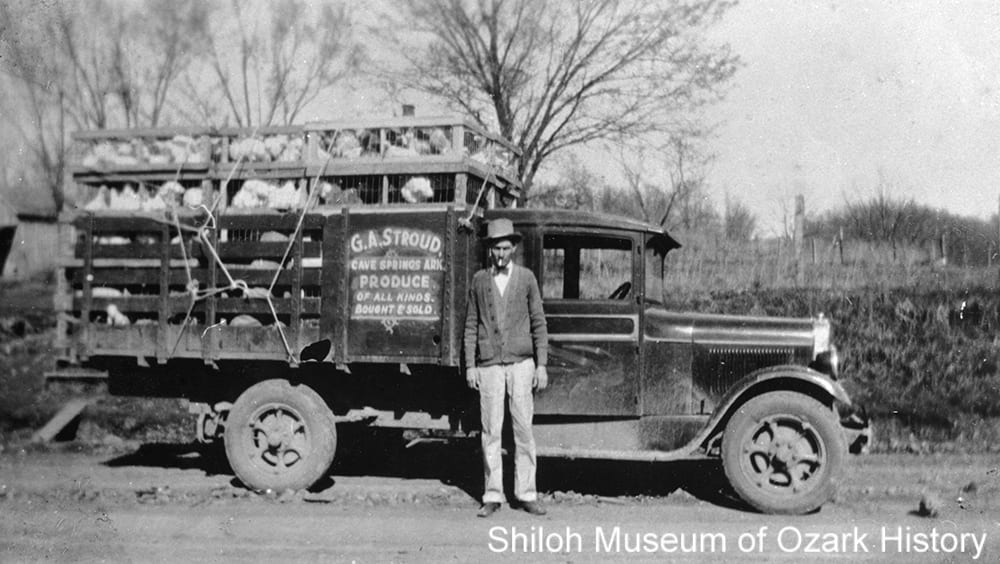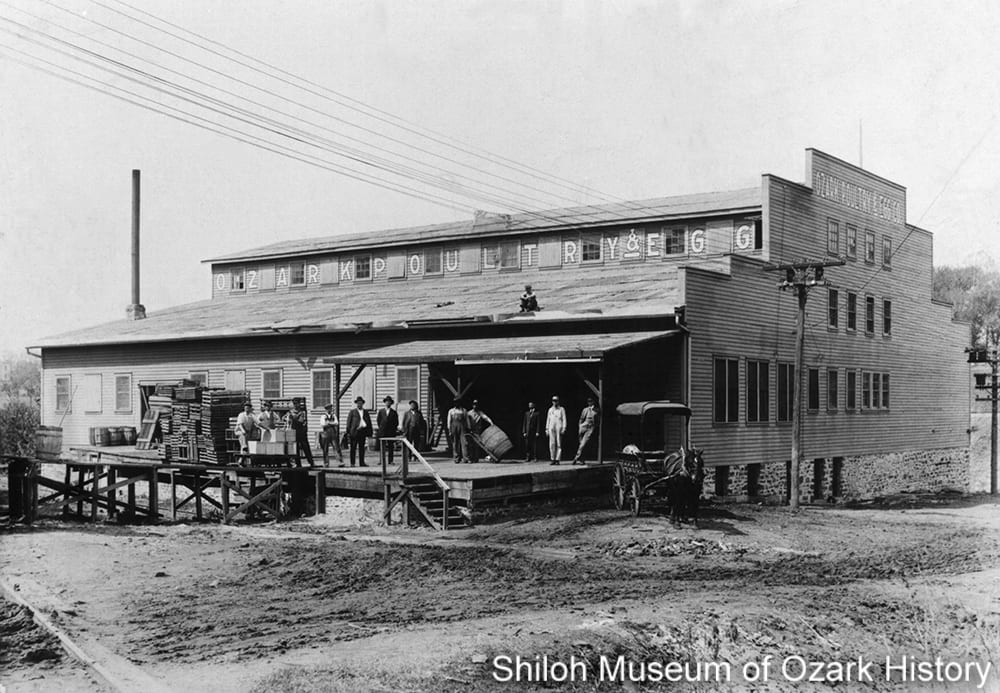Which Came First?
Early settlers raised chickens primarily for their eggs. With the coming of the railroads in the 1880s, a few enterprising farmers and businessmen began shipping out fresh eggs and live chickens to distant markets. In 1893 Judge Millard Berry of Springdale purchased an incubator with a 200-egg capacity. This piece of equipment mimicked the hen’s ability to keep her eggs warm while the chicks grew slowly inside their shells.
At the time, Northwest Arkansas was home to a thriving commercial fruit industry. But problems with disease, changing weather patterns, crop failures, and an economic depression in the 1930s led some to seek other sources of income. The area’s largely hilly terrain and poor soil weren’t suitable for large-scale crop farming. Poultry production offered farmers a way to put their land and skills to work. They began raising broilers (young chickens), turkeys, and laying hens, the latter for their eggs.

Chickens going to market in G. A. Stroud Produce truck, Cave Springs, 1920s–1930s. Erline Littrell and Pat Simpson Collection (S-87-11-2)
Poultry Then and Now
Birth of an Industry
Ozark Poultry and Egg Co., Fayetteville, late 1910s. Ann Wiggans Sugg Collection (S-93-18-16)
When Melvin L. Price formed the Ozark Poultry and Egg Co. in Fayetteville in 1915, he realized that the quality of local poultry and eggs was poor. He worked to improve breeding stock by swapping out his suppliers’ inferior roosters and turkeys with new, better birds. At first, he shipped live birds to market by rail, later adding processed birds—chickens which had been killed, cleaned, and made ready for consumers.
About the same time a few farmers in Cave Springs used their slow winter months to grow broilers, young birds weighing two-and-a-half to three-and-a-half pounds. Their interest was spurred by Edith Glover Bagby, who hatched a few eggs in an incubator. After raising the birds, she sold them at a profit. In 1919 Edith’s husband Earl Bagby, her father J. J. Glover, and Dave Boyd shipped a railroad carload of live birds to Chicago, receiving about $1.04 per bird. Area farmers took note of their success.
When Jeff Brown of Springdale had trouble with his fruit crop, he turned to raising broilers in 1921. Over the next few years, he perfected his hatching and feeding techniques. In 1929 he convinced First National Bank of Springdale to lend him the money to start the Springdale Electric Hatchery, complete with an electrically heated, 10,000-egg-capacity commercial incubator. To ensure quality chicks, he became a licensed poultry inspector, which allowed him to blood-test his flocks for infection and disease.

Ozark Poultry and Egg Co., Fayetteville, late 1910s. Ann Wiggans Sugg Collection (S-93-18-16)
“We shipped in young roosters from the North and exchanged them, pound for pound, for the scrub stock that was brought in [by the farmers]. The same procedure applied to turkeys, as we brought in fancy toms [male turkeys] and put them out to increase the quality of the flocks.”
Melvin L. Price, Ozark Poultry and Egg Co.
Flashback, November 1968
